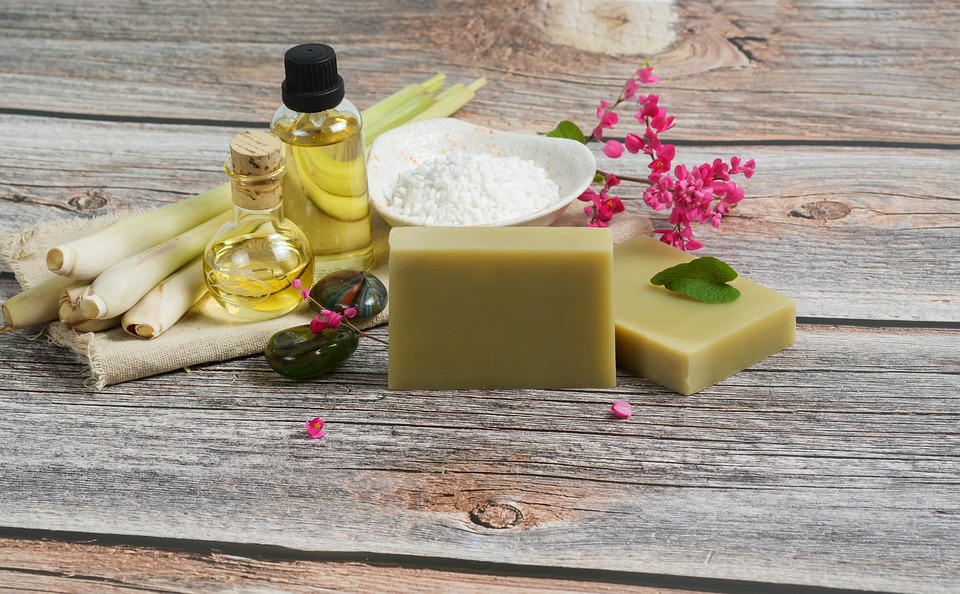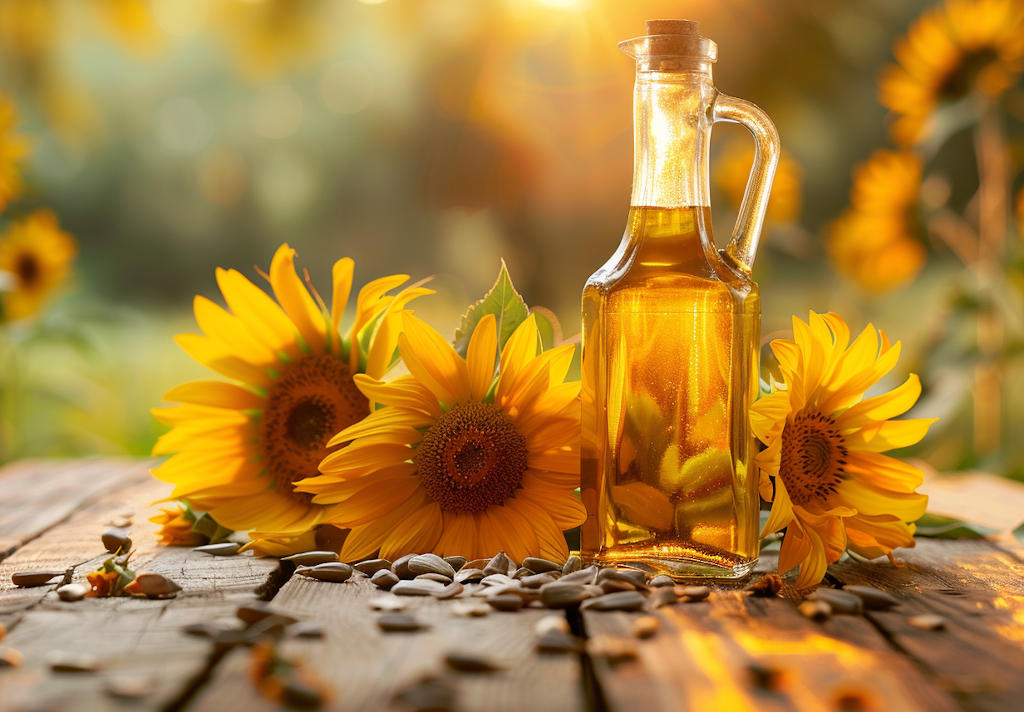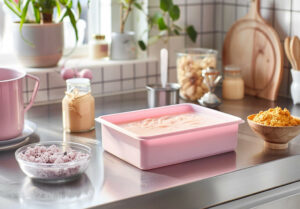What is Surgraissage in Cold Saponification?

Supergreasing is the icing on the cake in artisan soapmaking.
Cold saponification refers to the transformation of fats (oils and butters) into soap through the magic of caustic soda.
In theory, each oil or butter needs a certain amount of soda to turn into soap. But if you add a little more oil than necessary, some of these fats remain “free” in the soap. And that’s where the magic happens! This free fat in the final product will add extra softness to the soap and deeply nourish your skin.
Why over-grease?
Superfatting has several benefits:
- Gentleness: A superfatted soap is much gentler on the skin. The part not transformed into soap acts like a nourishing cream when used.
- Protection: Unsaponified oils and butters create a protective barrier that retains the skin’s natural moisture.
- Customization: Over-greasing allows you to add specific oils for particular properties. For example, calendula oil will provide soothing benefits, while rosehip oil offers regenerating properties.
How to super-grease soap? The different techniques
There are two main methods of superfatting in cold saponification:
Soda reduction (or overfatting by calculation)
- Simple and effective method, popular with soap-makers
- Reduces the amount of soda to preserve a portion of unprocessed fats
- Example: for a 5% over-greasing, the soda is reduced by 5% compared to the quantity needed to saponify all the oils.
- Advantage: some of the oils remain intact, nourishing the skin.
- Result: gentle, nourishing, homogeneous soap
Surgraissage à la Trace
- Technique in which a specific oil is added at the “trace” stage (when the mixture thickens).
- Allows the addition of precious oils (e.g. avocado, wheat germ) that remain partially intact
- Limitation: it is difficult to guarantee that the added oil will remain completely intact, as the soda reacts first with the fatty acids that are easiest to transform.
What greaseproofing rate should I choose?
We generally recommend a greaseproofing level of between 5% and 8%:
- 5%: A light over-greasing agent that is well suited to daily toilet soaps, without risking a soap that is too soft.
- 6-8%: An ideal amount for dry or sensitive skin, especially with specific oils for their nourishing properties. Above 8%, the soap risks becoming too soft, difficult to unmold and more likely to go rancid.
- The recipes for our Soap Kits are calculated using 7% extra grease. For me, this is the right measure for a gentle, PH-balanced soap.
How do I define Overfatting in Soap Calc?
- Open SoapCalc and access the main interface.
- In the recipe creation table, look for the “Super fat” bar in the top right-hand corner.
- Select the level of extra grease according to your preferences and the needs of your skin. For example, an extra-fat content of 5% is commonly used to obtain a mild soap, while an extra-fat content of 8% or more is suitable for dry or sensitive skin.
This setting in Soap Calc enables you to precisely calculate the amount of soda to maintain the desired level of surgras in your soap, guaranteeing a personalized, balanced recipe. For more details, check out our blog post on how to use SoapCalc!
And our 100% Coconut Soap?
Detergent effect of coconut oil:
Coconut oil is very effective at creating abundant lather and has a strong cleansing capacity. However, this power can also make the soap more drying for the skin, hence the importance of a high degree of oiliness.
High overfatting to compensate:
By over-greasing up to 30%, a significant proportion of coconut oil remains unsaponified in the soap. This extra fat helps compensate for the detergent effect of the coconut, making the soap much softer and more nourishing, even for dry skin.
Special feature of 100% coconut soaps:
With this type of formulation, 30% over-greasing maintains a balance between cleansing efficiency and skin protection.
This soap is gentle but still slightly more powerful in cleaning than other multi-oil superfatted soaps.
Benefits for sensitive skin:
Thanks to this superfatting, a well-formulated 100% coconut soap can be a good option for sensitive or dry skin that wants to benefit from the nourishing virtues of coconut oil while avoiding its drying effect.
Risks of over-greasing:
If over-greasing exceeds 30%, the soap may become too soft, difficult to unmold and more susceptible to rancidity. That’s why it’s generally advisable not to exceed 30% for this type of soap.
The risks of over-greasing
While heavy over-greasing is good for mildness, it can also make the soap more brittle:
- Soft soap: the more unprocessed fat, the softer the soap. Be careful if you use liquid oils (such as olive or sunflower oil): over-greasing too much with these oils can cause demolding problems.
- Rancidity: Unprocessed oils are more sensitive to oxidation, which can accelerate soap rancidity. Rancid soap often has an unpleasant odor and loses its properties.
Surgraissage and safety
To ensure a well-balanced soap and avoid any risk of causticity, we recommend staying between 5% and 8%. Falling below 5% can make the soap too “detergent” and caustic for the skin.
I hope this article sheds some light on how to make your own homemade soap recipes! ….



0 Comments